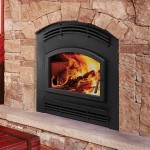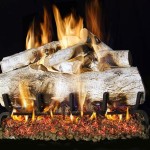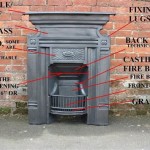Clay Pot Outdoor Fireplace: A Comprehensive Guide
An outdoor fireplace can transform a backyard into a cozy retreat. While elaborate, permanent installations offer a sophisticated aesthetic, a more accessible and budget-friendly option exists: the clay pot outdoor fireplace. This guide explores the practical aspects of building and maintaining a clay pot fireplace, outlining the necessary materials, construction steps, safety considerations, and design possibilities.
The clay pot fireplace, constructed from readily available terracotta pots, offers a portable and adaptable alternative to traditional stone or brick fireplaces. Its modular design allows for easy disassembly and storage, making it suitable for smaller spaces or seasonal use. Furthermore, the inherent thermal properties of terracotta contribute to efficient heat radiation, creating a comfortable ambiance on cooler evenings.
Materials and Tools Required
The construction of a clay pot fireplace is relatively straightforward, requiring only a limited number of materials and tools. The primary components consist of terracotta pots of varying sizes, a metal fire bowl, and decorative aggregate. The specific dimensions of the pots will influence the overall size and visual appeal of the fireplace.
A large terracotta pot serves as the base, providing stability and a foundation for the structure. A smaller pot, inverted and placed inside the larger one, creates a chimney effect, directing smoke upwards. A metal fire bowl, positioned at the base of the inner pot, contains the fire and prevents damage to the terracotta. Decorative aggregate, such as gravel or river stones, fills the space between the pots, adding visual interest and providing additional insulation.
In addition to the core materials, several tools are necessary for assembly. These include work gloves for protection, a level to ensure stability, and safety glasses to protect the eyes from dust and debris. A drill may be required to create drainage holes in the pots, depending on their existing design. A measuring tape is useful for ensuring accurate placement of the components.
Specifically, to ensure the safe and effective construction of the clay pot fireplace, consider the following list of materials:
*
Large Terracotta Pot (Base):
This pot's size dictates the fireplace's overall footprint. Choose a size appropriate for the intended space.*
Smaller Terracotta Pot (Chimney):
This pot must be smaller than the base pot to fit inside, creating the chimney effect.*
Metal Fire Bowl or Insert:
This heat-resistant bowl contains the burning wood and protects the terracotta. Ensure it fits comfortably inside the smaller pot.*
Gravel or River Stones:
This aggregate fills the space between the pots, providing insulation and aesthetic appeal. Pea gravel or similarly sized stones are ideal.*
Metal Mesh or Grate (Optional):
This provides a platform for the firewood within the fire bowl, promoting airflow for better combustion.*
High-Temperature Silicone Sealant (Optional):
This can be used to seal the pots together for added stability, though it is not always necessary.*
Sand (Optional):
A layer of sand at the very bottom of the outer pot can provide further insulation and protection.Essential tools for assembly include:
*
Gloves:
Protect hands from dirt and potential cuts.*
Safety Glasses:
Shield eyes from dust and debris.*
Level:
Ensures the fireplace is stable and upright.*
Measuring Tape:
For accurate placement and alignment of components.*
Drill with Appropriate Bit (Optional):
To create drainage holes if needed, particularly in the base pot.Construction Process: Step-by-Step Guide
The assembly of a clay pot fireplace follows a logical sequence of steps, beginning with preparing the base and culminating in adding the decorative elements. Proper execution of each step is crucial for ensuring the structural integrity and safety of the finished product.
The first step involves preparing the base. This involves selecting a level and stable location for the fireplace. The chosen location should be a non-combustible surface, such as concrete pavers or a stone patio. Place the large terracotta pot in the desired location. Consider adding a layer of sand to the bottom of the large pot for added insulation and stability. This layer should be approximately 2-3 inches thick.
The inner pot, which acts as the chimney, is then placed inside the larger pot. Invert the smaller pot so that its opening faces downwards. Center the smaller pot within the larger pot, ensuring that there is sufficient space between the two pots for the decorative aggregate. The gap between the pots is crucial for proper airflow and insulation.
Next, position the metal fire bowl inside the smaller pot. The fire bowl should rest comfortably on the bottom of the smaller pot. If desired, place a metal mesh or grate inside the fire bowl to elevate the firewood and improve airflow. This step is critical for proper combustion and efficient burning.
The space between the two pots is then filled with decorative aggregate. Pour the gravel or river stones into the gap between the larger and smaller pots, filling it to the desired level. The aggregate serves both an aesthetic and functional purpose, providing insulation and enhancing the visual appeal of the fireplace. Ensure the aggregate does not obstruct the opening of the smaller pot.
Below is a clear sequence of steps to guide the assembly process:
1.
Prepare the Base:
Select a level, non-combustible surface. Place the large terracotta pot in the desired location.2.
Add Base Insulation (Optional):
Pour a 2-3 inch layer of sand into the bottom of the large pot.3.
Insert the Chimney Pot:
Invert the smaller terracotta pot and center it inside the larger pot.4.
Position the Fire Bowl:
Place the metal fire bowl inside the smaller, inverted pot.5.
Add a Grate (Optional):
Place a metal mesh or grate inside the fire bowl for better airflow.6.
Fill with Decorative Aggregate:
Pour gravel or river stones into the space between the large and small pots.7.
Level and Secure (Optional):
Use a level to ensure the structure is stable. Apply high-temperature silicone sealant to the rims of the pots for added security, if desired. Follow sealant manufacturer's instructions.Safety Considerations and Maintenance
The safe operation of a clay pot fireplace requires adherence to fundamental fire safety principles and regular maintenance. Neglecting these aspects can lead to hazardous situations and compromise the longevity of the fireplace.
The most critical safety consideration is the location of the fireplace. The fireplace should be positioned away from flammable materials, such as dry leaves, overhanging branches, and wooden structures. A clear perimeter of at least 10 feet should be maintained around the fireplace to prevent accidental ignition of nearby objects. Never leave a burning fire unattended.
Only seasoned firewood should be burned in the fireplace. Green or wet wood produces excessive smoke and can contribute to creosote buildup in the chimney, increasing the risk of a chimney fire. Kindling and small pieces of wood should be used to start the fire, gradually adding larger pieces as the fire establishes itself.
Regular cleaning and maintenance are essential for preserving the functionality and aesthetic appeal of the clay pot fireplace. After each use, allow the fireplace to cool completely before removing ashes from the fire bowl. The ashes should be disposed of in a metal container with a tight-fitting lid. Periodically inspect the terracotta pots for cracks or damage. Replace any damaged pots promptly to prevent structural failure.
Prioritize the following safety measures and maintenance practices:
*
Location Awareness:
Position the fireplace at least 10 feet away from flammable materials.*
Never Leave Unattended:
Always supervise a burning fire.*
Use Seasoned Firewood:
Avoid green or wet wood to minimize smoke and creosote buildup.*
Ash Removal:
After each use, remove ashes and dispose of them properly in a metal container.*
Regular Inspection:
Periodically inspect the terracotta pots for cracks or damage and replace them as needed.*
Weather Protection:
Consider covering the fireplace during inclement weather to prevent water damage and prolong its lifespan.*
Fire Extinguisher:
Keep a fire extinguisher or a bucket of water nearby in case of emergencies.*
Local Regulations:
Check local fire codes and regulations regarding outdoor fireplaces before building and using your clay pot fireplace.By adhering to these guidelines, the clay pot outdoor fireplace can provide a safe and enjoyable source of warmth and ambiance for outdoor gatherings.

What Is A Mexican Chimenea The Pottery Patch

Pin By Raven Dixon On Outdoors Clay Fire Pit Materials Outdoor Designs

Owning A Clay Chiminea They Any Good

31 Patio Fireplaces Creating Outdoor Living Room Spaces Standing Fireplace Small Patios

Large Mexican Clay Chimenea Fire Pit Cool Pits Backyard

Jumbo Natural Terracotta Clay Chimenea Fire Pit Outdoor Fireplace Designs

Make A Portable Fire Pit In Just 5 Minutes Hometalk

8 Best Chiminea Fire Pits For Your Backyard Clay Steel And More

Can You Use A Fairly Large Wide Clay Pot As Diy Fire Pit Quora

What Can You Cook In A Chiminea Clay Fire Pit Outdoor Fireplace Designs Bbq








